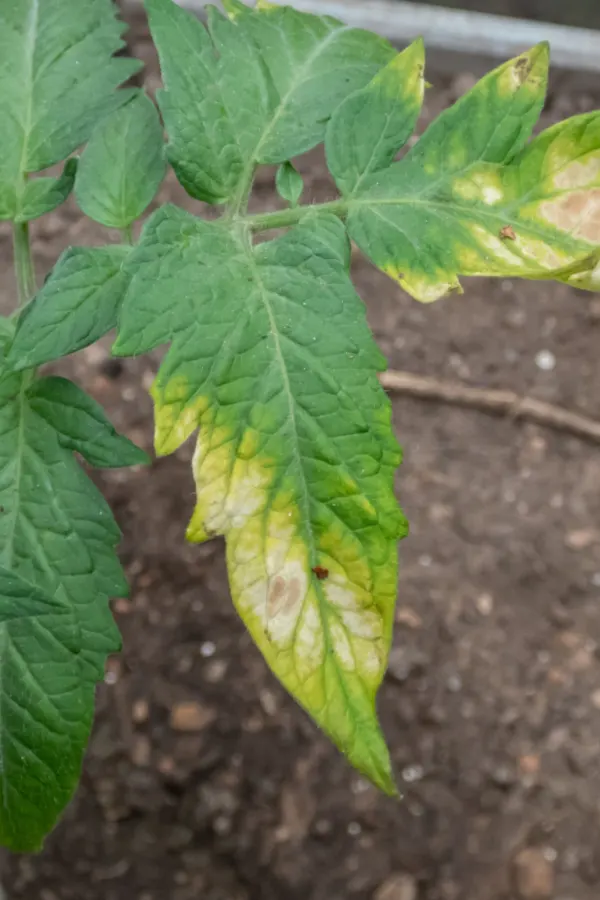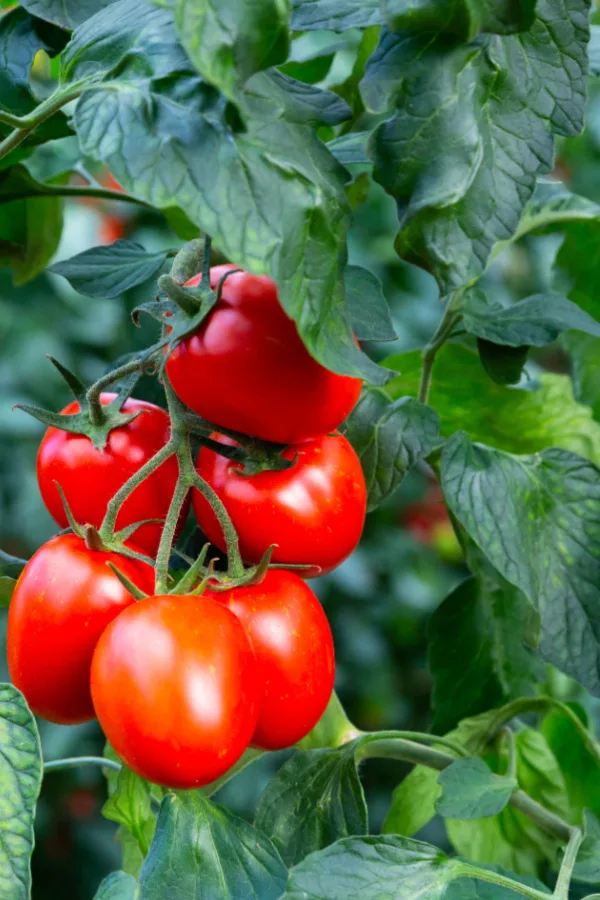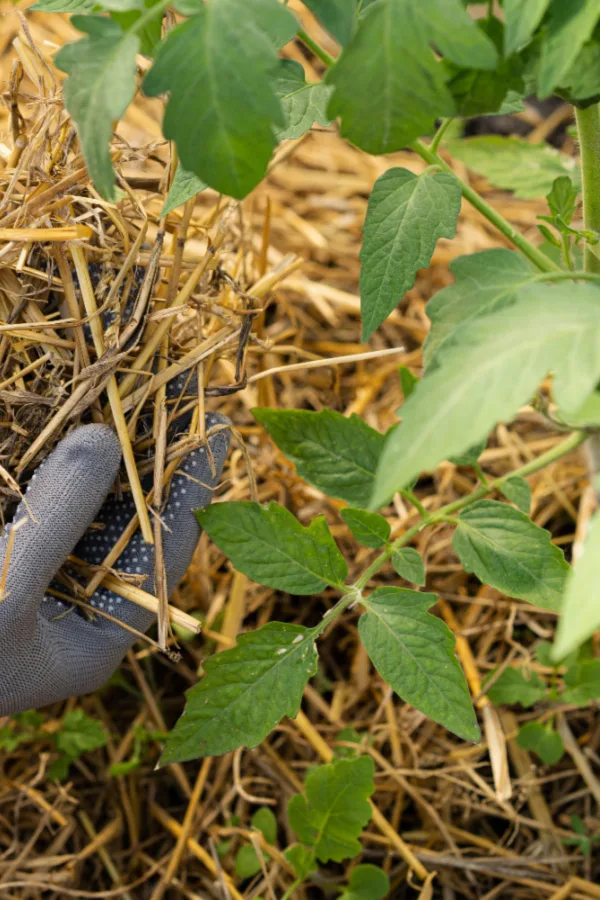Want to know the 5 biggest mistakes made when planting tomatoes – and more importantly, how to avoid them to plant your tomato plants just right for a big, juicy harvest of delicious red-ripe tomatoes this year?
When it comes to growing tomatoes in a garden, raised beds or even containers, there are a few costly planting mistakes that can keep a tomato plant from reaching its full potential. And by simply avoiding these common miscues, you can have your plants off to a fast start. And even more importantly – growing healthy and strong!
For those that love to grow vegetables, tomatoes are at the top of the list in popularity. But they can also be one of the most frustrating plants to grow. Especially when plants fail to take off early in the growing season.

Unfortunately, more times than not, when plants fail to grow or have issues with pests and disease later on, the problems can almost always be traced right back to how and when they were planted.
The good news is that by simply avoiding a few critical planting day mistakes – you can steer clear of those problems – and even better, enjoy a banner growing year with a big harvest of tasty tomatoes. With that in mind – here is a look at how to avoid the 5 biggest pitfalls, and plant your tomatoes for success!
The 5 Biggest Mistakes Made When Planting Tomatoes
#1 Planting Too Early
Without a doubt, planting tomato plants too early in the season is one of the biggest ways to set your plants up for failure! Planting in cold soil with cool air temperatures can lead to a whole host of problems for young tomato plants. Some of which, such as a frost or freeze, they can have a hard time fully recovering from.
When young tomato transplants go into cold soil, their roots fail to develop. Instead, they go into a dormant-like state. Not only can it stunt their growth, it can also leave the plant vulnerable to mildew and rot.
It’s far better to let the soil and air temperatures warm before planting. It lets plants grow right from the start. So much so that plants that go into warm soil quickly surpass plants that were planted in cool soil weeks before.

For best growth, let your soil warm up to a minimum of 60° (F) before planting. Use an inexpensive soil thermometer to check the soil temperature to be sure the soil is warm. Affiliate Link: Acurite Stainless Steel Soil Thermometer
Unfortunately, gardeners often think the soil is warm after a few 70° days. It actually can take seven to ten days of warmth to get the soil to where it needs to be. Although it may be tempting to get an early jump on the growing season, this is one time patience will pay off!
#2 Failing To Plant Tomato Plants Deep – The 5 Biggest Mistakes Made When Planting Tomatoes
If there is one thing you can do to help your tomato plant get off to a fast start – it’s to plant them deep! Plain and simple, a deep planting hole is vital for the long-term success of a tomato plant.
Planting deep allows your tomato plants to develop an extensive underground root system. A strong root system not only anchors plants securely in the ground, it also creates a massive network of essential feeding tubes for your plants.
The more roots your plants have, the more water and nutrients they can take in. When planting tomatoes, dig your planting holes deep – deep enough that you can bury 2/3rds of your plant (including the root ball) below the soil.
Listen Below To Our Podcast On How To Jump Start Tomato Plants!
This is important because it helps your tomato plants develop additional roots along their stems. How? Because all of those tiny hairs you see along the main stem of a tomato plant develop into roots when they are planted underground. And those roots will bring big energy to your plant!
#3 Failing To Give Your Plants Extra Nutrients – The 5 Biggest Mistakes Made When Planting Tomatoes
Speaking of big energy – another huge mistake gardeners make is to not fill their planting hole with instant power as they plant! Whatever you do, don’t just plant your tomatoes and cover them up with ordinary garden soil. Even the best of garden soil needs a boost when planting tomatoes.
To really power your tomato plants to early season growth, fill your planting hole with serious power. We use compost, pulverized egg shells, coffee grounds, wood ashes and our biggest secret weapon of all – worm castings in every single planting hole.
Worm castings help to power plants and lighten the soil around your plant’s roots. They also absorb and hold moisture, which is critical for early growth. We use 1 cup of worm castings in every planting hole – and the results for our plants have been simply fantastic over the years! Affiliate Link: 100% Pure Organic Worm Castings Fertilizer
Finally, as an extra tip as you plant – always make sure to lightly break apart the roots of your transplant ball before planting. If the roots have balled around the soil in the container, they can have difficulty growing into the new soil.
#4 Failing To Mulch On Planting Day – The 5 Biggest Mistakes Made When Planting Tomatoes
Never underestimate the power of mulch. Especially with tomato plants. Whether it’s with straw, grass clippings or shredded leaves, providing a thick coat of natural, organic mulch around your tomato plants will pay big dividends all summer long.
Mulch helps to regulate soil temperature to help keep roots stress free. It also helps to conserve moisture in the soil. More importantly, it is perfect for helping to prevent and suppress weeds. Weeds that if present will compete for the same resources your tomato plants need to grow and produce.
Perhaps the biggest advantage of all is that mulch can help to prevent blight. Blight is a soil borne disease caused by spores splashing up and infecting the plant. But a thick layer of mulch can keep soil and spores from splashing up.
Mulch as soon as you plant. And if you really want to provide a boost, add a few inches of compost around the base of your plants first – and then add your regular mulch on top The compost will help insulate the soil as well, and leach down nutrients every time you water or it rains.
#5 Planting Tomatoes In The Same Location As Last Year – The 5 Biggest Mistakes Made When Planting Tomatoes
Last but not least – always rotate where you plant your tomatoes from year to year! Tomatoes are extremely vulnerable to disease, especially soil-borne disease. They also require a large amount of nutrients from the soil for strong growth. Nutrients that are easily depleted when you continue growing the same crop in the same soil year after year.
This is why it’s critical to rotate and move your tomato crop every season. In fact, tomato plants should never be planted in the same location for a minimum of 3 years. This keeps issues like tomato blight and black rot at bay. See our article: How To Prevent Tomato Blight For Good!
If growing in raised beds, move plants to a new area of soil each season as well. And if planting in pots or containers, remove and replace the soil each growing season to keep your plants in healthy, productive soil.
Rotating your crop also allows the soil time to recharge and replenish important tomato growing nutrients like calcium, nitrogen, phosphorous and potassium. Without their presence in the soil, tomato plants simply won’t have the nutrition they need to develop.
Here is to avoiding the 5 biggest tomato planting mistakes – and to having your best crop of tomatoes ever! Happy Gardening – Jim and Mary
Old World Garden Farms
Jim and Mary Competti have been writing gardening, DIY and recipe articles and books for over 15 years from their 46 acre Ohio farm. The two are frequent speakers on all things gardening and love to travel in their spare time.
As always, feel free to email us at thefarm@owgarden.com with comments, questions, or to simply say hello! You can sign up for our free email list in the subscribe now box in the middle of this article. Follow us on Facebook here : OWG Facebook. This article may contain affiliate links.


